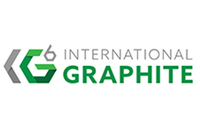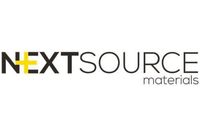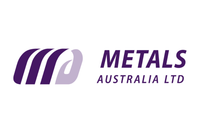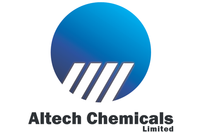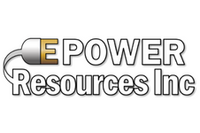
Graphite demand is growing because it is essential for many industries, including lithium ion batteries and many new cleantech applications. What should investors look for in order to win in the graphite space?
Graphite demand is growing because it is essential for many industries, including lithium ion batteries and many new cleantech applications.
What should investors look for in order to win in the graphite space?
Why purity is important
Purity heightens critical performance factors for lithium-ion batteries, including resistance to thermal shock, a low coefficient of thermal expansion, high electrical conductivity, high structural integrity, and low reactivity.
The quality of a deposit is determined by flake size, grade, purity, and purification costs. The higher the grade, the less processing it may need; thus, a higher purity provides a better cost-value for investors. The preferred purity level for flake graphite is 94 to 96 percent in order to be considered for batteries.
The process to qualify graphite for the high quality lithium ion batteries used in electric vehicles has many steps. But the general consensus is that if using raw material, flake and spherical graphite is the way to go if you want high quality.
Flake graphite takes purity and size into consideration, but spherical graphite considers purity and shape. Spherical graphite is flake graphite that has been through an expensive secondary process to turn its flat shape into a spherical shape. This requires a lot of fine grinding, spheroidization, and chemical purification that ultimately produces a desirable and pure product that is very fine. Spheridization improves density and reduces particle size, which is ideal when improving the quality of a li-ion battery.
After ore is mined from the deposit, it is crushed and ground and put through a floatation process to separate graphite and create a concentrate. Afterwards, producers use processing techniques to upgrade the graphite concentrate to an ideal 99.9 percent in purity.
Processing
Although mining high-grade graphite is important, purity is mostly achieved through processing. Graphite is processed depending on the consumer need and considerations of the deposit, but purification usually includes either a thermal or acid treatment as well as a surface treatment, which improves first cycle efficiency and stability.
So, who will corner the market?
Those who are able to mine and process high-grade graphite throughout the supply chain may very well see success. As graphite usually needs to be mined and processed in order to meet specific and ad hoc needs for consumers, vertical integration will likely be the key to success.
Many companies are ramping up to meet the new demand for battery-grade graphite, but the ones who will meet the challenge are those who can master the supply chain to lower production costs.
Here are eight companies that are doing just that – and in the process, positioning themselves to corner the graphite space.
- Energizer Resources (TSX:EGZ,OTCQX:ENZR)
- Alabama Graphite (TSXV:ALP)
- Eagle Graphite (TSXV:EGA)
- Elcora (TSXV:ERA)
- Bass Metals (ASX:BSM)
- Leading Edge Materials (TSXV:LEM)
- Hexagon Resources (ASX:HXG)
- Focus Graphite (TSXV:FMS,OTCMKTS:FCSMF)
Energizer Resources (TSX:EGZ,OTCQX:ENZR)
Energizer owns the Molo Graphite Project in southern Madagascar. 53.3 percent of the Molo deposit is classified as +100 mesh and larger. Energizer completed its Bankable Feasibility Study in February 2015, confirming that the Molo project is economically viable. It also indicates that the project has one of the lowest operating costs in the industry.
The company is aiming for construction in Q3 2017 with targeted production by Q4 2018.
Molo’s graphite concentrate has already been verified by end-buyers to be suitable for refractories, lithium-ion batteries and specialty graphite foils.
Alabama Graphite (TSXV:ALP)
Alabama Graphite has the most advanced flake graphite project in the US – the Coosa Graphite Project in Alabama. Focused on becoming this century’s first graphite-producing mine in the US and a leading ‘Made in USA’ supplier of specialty coated spherical graphite, the company has announced that metallurgical testing resulted in purities of 99.99 percent graphitic carbon for the Coosa materia.
The Coosa Graphite Project has an ultra-high-purity grade of 99.95 percent graphite which was achieved using Alabama Graphite’s vertically integrated and conventional low-temperature thermal purification process. Construction of the company’s pilot plant is currently underway.
On January 2016, Alabama Graphite announced positive independent preliminary electrochemical test results representing a 94.91% efficient battery. The company is moving towards realizing its mission of being the US green-energy supply chain producer—in August 2016 the company manufactured and shipped three one-kilogram evaluation samples of its Purified Micronized Graphite to a US-based leader in both lithium-ion and lithium batteries for a diverse range of military applications, under contract from the United States Department of Defense. Alabama Graphite also recently provided 8 different samples to Stanford University Department of Chemistry Professor, Dr. Hongjie Dai for his continued work on Aluminum-ion battery development, specifically, large-scale Al-ion battery development.
Eagle Graphite (TSXV:EGA)
Relatively new to the sector (the company began trading on the TSX Venture Exchange in 2015), Eagle Graphite has already established its credibility with potential customers in the battery industry.
Eagle Graphite is one of two flake graphite producers in North America. Their flagship mine, the Black Crystal project, produces high carbon flake graphite, and test samples from the project exceeded the required purity levels lithium ion batteries.
The company reported that its products include large flake graphite at +80 and +100 mesh with 94 to 99 percent graphitic carbon purity, which is often sought at premium prices in the marketplace.
Sandy, graphite-bearing feed material is excavated from the quarry and then driven to the nearby plant – strategically located near hydroelectric grid power and plentiful water – for processing. Permitting and infrastructure for graphite production have been in place since 2001, and the operational production facility has historically produced at an equivalent output of 4,000 tonnes of graphite per annum.
Preliminary drilling at the plant site highlighted an outcrop which hosts multiple graphite bearing seams in excess of 10 meters in width. Because this mineralization is less than 100 meters from its flotation plant, the site could represent a significant future target.
Elcora (TSXV:ERA)
Founded in 2011, Elcora is a vertically integrated graphite and graphene company. The company mines, processes, refines, and targets high-end graphite markets including lithium ion batteries.
The Sakura graphite mine (also historically called Ragedara) is a historic past producer. At the height of its activity, the mine produced approximately 18,000 tonnes of high quality graphite (92-99 percent purity) per year. In early 2014, Elcora acquired full operational control and a 40 percent equity interest in Sakura Graphite, who operates the Sakura mine. Currently, the mine is still in production and yields about 500 tonnes of graphite per year.
The company’s first graphite processing plant is located near the Sakura mine and performs four refining activities: grinding, flotation, dewatering, and product load-out. The fully refined graphite has a purity of over 99 percent and size range between 5 microns to 1 millimeter.
The company has also developed techniques to separate graphite from most known host rocks to grades in excess of 99 percent while maintaining crystal integrity. They have also developed technology to reduce the size of the graphite crystal in ways that preserve the flat crystal shape to specific sizes that can be as small as five micrometers. The flakes can also be processed into spherical graphite, especially useful for the battery industry.
Bass Metals (ASX:BSM)
Presently, Bass Metals operates Graphmanda, a large flake graphite mine with two graphite deposits already being mined (Loharano, Mahefedok) and two deposits which have exploration projects planned (Mahela, Ambatofafana). Located in the world-renowned and politically stable Madagasca, the company acquired the Graphmanda mine in July. Production from Graphmada totalled about 1,500 product metric tons in 2015, with a high proportion being large flake graphite with over 94 percent purity.
The company has an onsite processing plant with a drying and packaging facility currently producing 6,000 product metric tons per annum.
Systematic exploration activities have been focused on the Mahefadok deposit since 2014 and exploration work results confirmed that the Mahefadok prospect contains significant flake graphite mineralisation over 1.8 kilometres in strike length. Trial mining commenced in early January 2016 at the northern extension of the Mahefadok deposit, and to date about 10,000 tonnes of material has been mined, with product sold to existing customers.
The company has existing and proven cash flow and production expansion is presently underway. Currently, it’s the only Australian ASX listed graphite producer with a revenue stream, which may mitigate some risk for investors.
Leading Edge Materials (TSXV:LEM)
Leading Edge Materials is now defining the next steps required to ensure high purity spherical graphite produced from its 100 percent owned Woxna project in Sweden can meet the stringent demands of lithium ion battery cell manufacturers. The latest round of test work for graphite purity achieved high electrochemical performance results and exceeded expectations in most measured values.
The company began producing graphite from its Woxna project in Sweden in 2014, targeting an annual production rate of 10,000 metric tonnes. Unfortunately, low selling prices forced the company to suspend production in July 2015. The halt at Woxna may have provided part of the incentive for Flinders management team to look for an alliance with Tasman and forward its Norra Karr rare earth project in Sweden. The two projects could give Leading Edge triple the advantage in the battery market with graphite, lithium and aluminium materials output.
The Woxna facility remains on a production ready status, which means any future decision to recommence mining would not require a preliminary economic assessment demonstrating the potential viability of mineral resources or a feasibility study of mineral reserves demonstrating economic and technical viability.
With a fully permitted mine and processing facility, Leading Edge Materials is well positioned in the Western graphite industry, and can play a lead role in the secure and sustainable supply of high purity graphite to the expanding lithium ion battery market.
Hexagon Resources (ASX:HXG)
Hexagon Resources Limited is an Australian based exploration company focused on supplying high-purity graphite – specifically, highly crystalline flake graphite. The primary focus for Hexagon is the development of the McIntosh Flake Graphite project, located in Western Australia.
A study was recently completed on bulk scale material from Hexagon Resources’ McIntosh Project. Elemental composition after the combustion of Hexagon’s flake graphite sample confirmed that it was ultra-high purity material grading above 99.9 percent. X-Ray diffraction has confirmed that the carbon in the representative bulk scale graphite concentrate is crystalline with no amorphous material, which is perfect for batteries.
Hexagon also has three flake graphite projects in South Korea: Geumam, Taewha and Samchoek. The graphite at the Geumam project is classified as fine flake, Taehwa is classified as a coarse flake deposit, and Samcheok showed a common flake graphite grain approximately 250 microns in size, making it a large flake deposit.
Focus Graphite (TSXV:FMS,OTCMKTS:FCSMF)
Calling their deposit at Lac Knife “the most advanced battery-grade graphite project in North America,” Focus Graphite has a lot to look forward to.
First, it holds 100 percent ownership of its Lac Knife crystalline flake graphite deposit located in the Côte Nord region of Québec. At approximately 15 percent graphitic carbon mostly above a 98 percent purity, Lac Knife is one of the highest-grade flake graphite deposits in the world. A positive feasibility study indicated that Lac Knife had the potential to become one of the lowest-cost, highest-margin global producers of graphite at $441 per metric ton of graphite concentrate.
Another 100 percent owned deposit, Lac Tétépisca, is a graphite property that has a preliminary metallurgical characterization of a 10 kilogram composite sample. The test showed a carbon content averaging 97.7 percent for plus 80 mesh flake – a quality that is critical to the lithium ion battery market. However, Focus said the concentrate grades could be further improved through secondary polishing and cleaning, similar to the Lac Knife concentrate.
In August, Focus Graphite announced it had successfully purified fine flake graphite from its Lac Knife deposit – from 95% to 99.99% purity using a proprietary energy efficient purification process.
As the owner of the highest-grade (roughly 16 percent) technology graphite resource in the world, the company is on track to become an industry leader and become a cost-effective producer of technology-grade graphite.
Don’t forget to follow us @INN_Resource for real-time news updates!
Securities Disclosure: I, Nick Smith, hold no direct investment interest in any company mentioned in this article.
Editorial Disclosure: Alabama Graphite, Eagle Graphite, Energizer Resources, Focus Graphite and Leading Edge Materials are clients of the Investing News Network. This article is not paid-for content.
